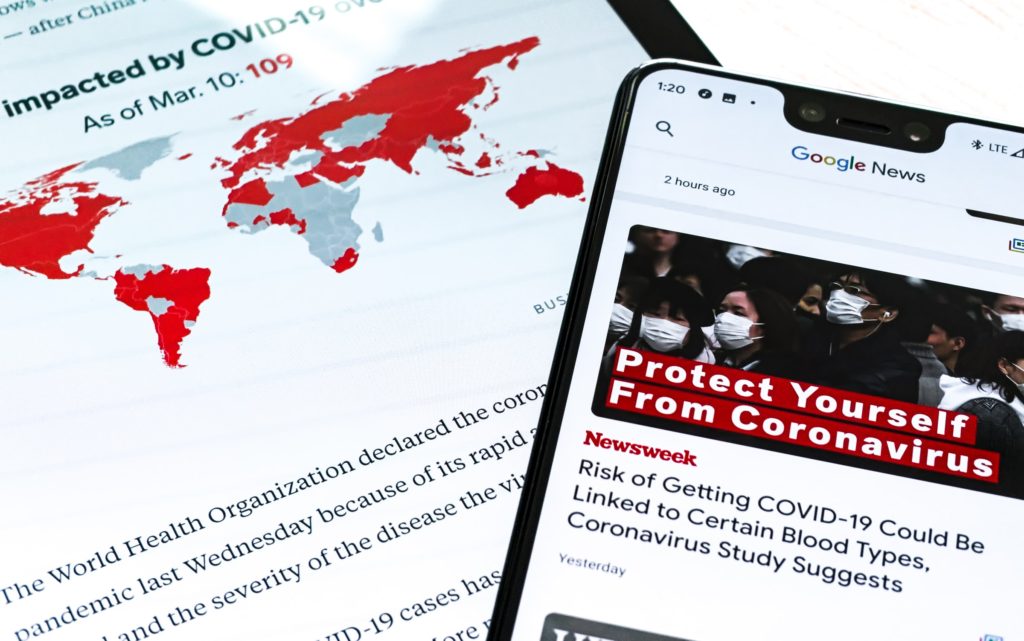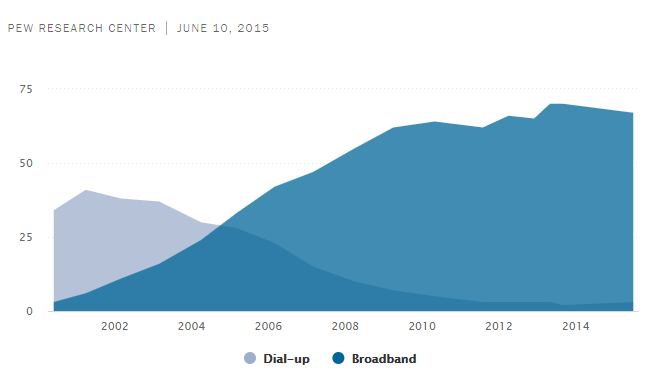SHARE
Direct Sales Online Revolutionized the Industry

Over the last ten years, the world of direct selling turned upside down. Direct sales moved online and now everything is different.
It happened so quickly, some of you reading this slept through it. You woke up on your head, and you’re rubbing your eyes wondering what exactly is going on.
If you’re lost, I’m here to tell you what is happening.
What’s happening?
Social media has revolutionized the way people interact with and relate to each other. Eager, early-adopter distributors rushed right in, finding new opportunities to meet people and spread their message.

Video conferencing, video calling, and livestreaming revolutionized the way people consume information and connect. Pioneering distributors started finding ways to hold parties and meetings online; They started demoing products, training their downlines, and offering social support virtually.
Ecommerce and especially Amazon revolutionized the way people shop for and buy just about everything. Direct selling companies have been forced to keep up. Some have done better; Some have done worse. Which camp are you in?
Meanwhile, the FTC did their part to keep up too, and their job has gotten easier every year. Companies and distributors have put more and more content online on YouTube unprotected so anybody can look at it. All the FTC has to do is click the play button and watch.
The FTC pushed direct sellers to focus on customers. In the same cultural moment, the customer’s need to receive that focus skyrocketed.
Fake news and false reviews
A proliferation of information, misinformation, conflicts of opinions, and outright lies online led to radical divergence in behavior in every category from how we think, act, behave toward one another, to yes how we shop. As more and more of our lives happen online, we fall deeper and deeper into ourselves. We’ve become more vulnerable to misinformation and more desperate for connection.

Are your distributors providing that connection or are they spamming people with annoying, emoji-cluttered, compliance-nightmare Facebook posts?
Amazon offers us cut-rate products of every possible kind, but we can’t know if the seller we bought from yesterday is the same one Amazon is serving us today. We can’t know if the review we’re looking at came from a real person or a review farm in India. Are the ingredients in this product pure? Is this a knock off? Is this green?
You don’t have these problems. Personal connection and purity of product are two advantages that direct selling companies have always had. Your distributors are real people who your customers already know. They live right down the street. And your product came from the same farm that you’ve been strictly regulating for three decades.
Direct sellers were poised for massive growth but some of them didn’t know it yet.
And then came the year 2020
COVID-19 arrived and kicked everyone who wasn’t already online over the cliff. Now everyone is using social media, video, and ecommerce to get what they need.

Ecommerce now accounts for 21.03% of total retail sales in the U.S., up from 4.2% in 2010. Online sales are more reliable and trusted than ever. That percentage is even higher in the MLM world. Many direct selling companies do over 70% of orders online. For a lot of people that would have been inconceivable twenty years ago.
The direct sales world is almost unrecognizable. It’s not going back to the way that it was, and it’s not done changing.
The change is both good and bad. If you’re moving along with the tides, then it’s great. For many companies, business is booming. Out of the top 111 direct selling companies in the U.S. only 15 did not see increases in revenue in 2020. If your company was one of the lucky ones that went up, you may not understand what drove all the new business. You might worry that the increase could lead to more FTC scrutiny. We know that early on in the pandemic, the FTC got after companies for their distributors making income claims. The companies that don’t adapt, won’t survive.
But why is all of this happening?
Here we have to speculate. You might point to any one of the things I’ve already mentioned as the “cause” of the revolution. Or you might point to the law that first allowed commercial activity to happen on the internet. That law only went into effect in 1996. Before that it was illegal to conduct business online.

In twenty-five years, ecommerce has gone from being illegal to being the driving force behind the industry. Everything online is now commercial in some way or another. So, virtually nothing you touch when you go online—social media, email, video conferencing, and ecommerce—could exist without that law.
You could make an argument that that single event triggered this revolution, but I don’t think that’s it. The real trigger of the revolution is something else entirely. Something happened that caused a whole bunch of changes—ripple effects across the planet. Changes that we’re still running as fast as we can to catch up to. What was that single trigger event?
Broadband Internet.
Back when the internet was young
Many of you reading this don’t remember old dial-up modems—the technology that preceded broadband, that is: 56k internet. Oh, man, when it first came on the scene, we thought 56k was so cool.
Back in the day, it could take several hours for a single article to download. Nancy, the academic among us, used to go to the library to download articles to use in her research papers. Back then, you didn’t own the computer, and you could only do one thing at a time on the computer (and you of course had to walk up hill both ways through the snow). It took so long to download one article, she would take a book with her so that she could read a couple of chapters while she waited. In comparison to waiting two weeks for interlibrary loan, she was happy to sit in the library that long. That’s how far we’ve come.

Today almost nobody uses dial-up. According to Pew, broadband surpassed dial-up in 2005.
The usability difference between broadband and dial-up is obvious but the technical difference might not be. If you’re on Google Fiber, you might be getting 150 megabits per second (Mbps). That’s 150 million bits per second. According to speedtest.net, 86.04 Mbps was the average internet speed in the US in 2020. A paragraph ago, we reminisced about using a 56k modem. 56k is 5600 bits per second. We’re talking many orders of magnitude of difference.
The impersonal internet became personal
Nancy remembers a meeting in which executives of a big and famous party plan company told her they would never use the internet to connect with customers. Never. At the time, they believed it was too impersonal. That was 2001. Direct sales is a social business and without the possibility of being face to face—that is, without video—the internet could never be personal enough for it to be a viable platform for direct sellers. Even into the 2000s, video calling the way that we do it today was just unimaginable.
In the 1970s, AT&T ran a series of ads with the slogan “Long distance. The next best thing to being there.”
During COVID, video conferencing became the present day “next best thing to being there.” But it wasn’t COVID that made video conferencing possible—COVID just popularized an option that we already had and were afraid to use. Part of why people were afraid to make video calls was the tools came into existence before the bandwidth to support them was widely available. We all have memories of sketchy video calls that were awkward, pixelated, and uncomfortable.
If you don’t have at least five megabits or 5000 KBps of download and upload, then you can’t run a decent quality video conference. It’s just not possible. In 2007, the average connection speed was around 4000 KBps. For five years, bandwidth was basically flat just below the threshold necessary to make video calling smooth and pleasant.
source: tradingeconomics.com
We didn’t reach that crossover point until 2012. You can see from the graph above that the average was 5000 KBps in 2012. That means half of internet users were above that, half of them were below. But by 2014, the average doubled meaning virtually everyone was able to have a smooth and pleasant video call. That’s the moment in time when video conferencing really starts to work, and it’s the same moment when the internet becomes personal.
From then on, keeping your direct sales business 100% offline becomes a pipedream.
An insatiable hunger for bandwidth
After that, internet speeds just went into hyperdrive. Look at the curve of that upward climb. The rate at which internet speed increased is unbelievable. It’s hard for us as human beings to wrap our heads around big numbers, so I’m going to use an analogy.
Think about it like this:
Imagine if the speed of jet travel had increased at the same rate as the speed of the internet to the household between 2007 and 2014.
You’d be able to fly from New York to Japan in a few minutes.

Imagine that in the span of just seven years it became possible for you to make that flight in less time than it takes you to get to your best friend’s house or go to the grocery store. How would that change the world of business? Travel? Leisure? Everything else? It’s just an unimaginable change. It would change the whole world economy. That’s what happened to the speed of the internet.
Yes, the 1996 law was important—essential—to the revolution we’re living through. Other changes have been enormous. But nothing compares in triggering the revolution more than the average speed of the internet in the home.
Our hunger for bandwidth is insatiable, and it’s all about connection. Now Google Fiber is spreading megabit (and even gigabit) internet from one urban area to the next. Tomorrow Starlink will take megabit internet to the middle of nowhere with low earth orbit satellites. And it will become ubiquitous. No matter where you go, you will be able to connect—top of the mountain, bottom of the valley, it won’t matter.
What will that kind of connectivity give us?
It’s not over yet
The point is, the revolution is not over because the cause of the revolution hasn’t stopped churning. Bandwidth keeps growing and as it does the ripple effects across the globe will continue. The more bandwidth people get, the easier it will be to connect to others. The easier it gets for people to connect; the more ways people will find to connect. Human beings are social animals. We are built to connect to one another. And the direct sales business is all about connection.

If you’re trying to run an MLM the way you ran it 10 years ago, you will miss the boat.
How do I know that’s true?
We have seen huge changes like this in the industry before. When I was starting out in this industry it was right at the brink of a different revolution—the multi-level revolution. Before the 1980s, direct sales compensation was all single-level (or very nearly). When multi-level compensation came on the scene, they kept “those MLM people” fenced off in a corner where nobody else had to look at them.
Now multi-level compensation is ubiquitous; There’s hardly a direct sales company anywhere around with true single-level compensation. The old school direct sales companies that didn’t adapt to the new way of compensating distributors went the way of the dinosaurs. I can pretty much guarantee that if you ignore this new revolution the same will happen to you. If you don’t have a strategy for your company to use these new tools and for your distributors to use these tools, you’re dead.
We’ve discovered a continuing need for our experience and guidance in the MLM world, so we’ve not only relaunched MLM.com to keep giving you our insights for free, we’ve opened a new firm, MLM Compensation Consulting. If your company needs compensation analytics, we’d love to hear from you. Check back weekly for more articles and podcasts from MLM.com!
you may also like
Essential Software Customizations for MLM, Direct Selling, and Affiliate E-commerce
Navigating the changing landscape of e-commerce, particularly within MLM, direct selling, and affiliate marketing channels, requires more…
How to Ensure Your Compensation Plan and Software Work Well Together
Peanut butter and jelly. Milk and cookies. Batman and Robin. Everybody knows these famous pairings work well…
Podcast 53: Advantages Using an Interim VP of Sales for Direct Selling Companies
Today we welcome a returning guest of this podcast: Jeff Jordan. Jeff has also written articles for…
compensation consulting for mlm companies
We offer data-driven compensation plan design & analysis
MLM.com Newsletter
Get our e-mail newsletter, with MLM.com articles & online exclusives, delivered to your inbox each week.



